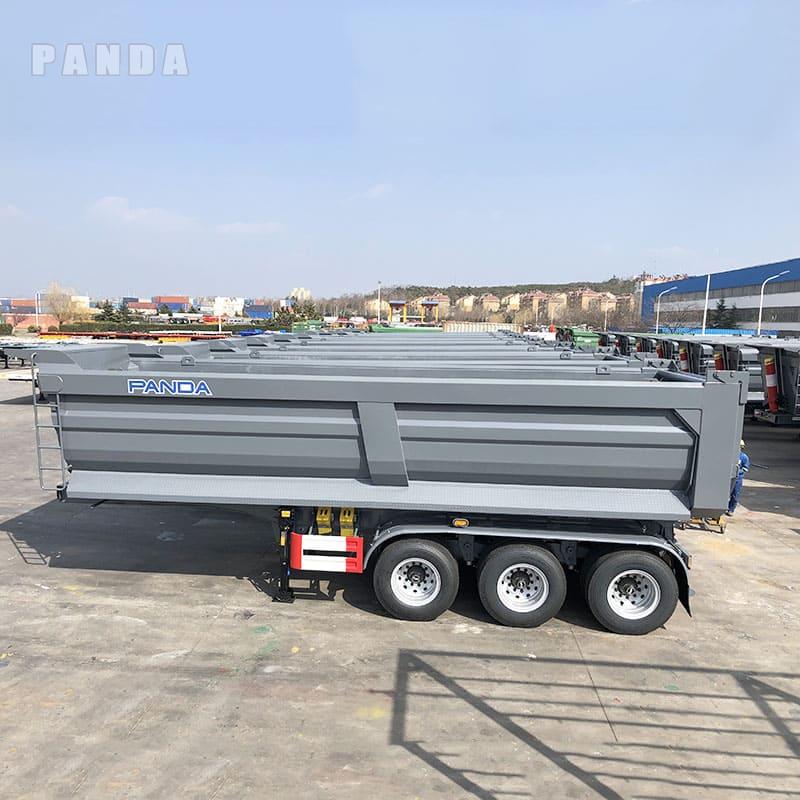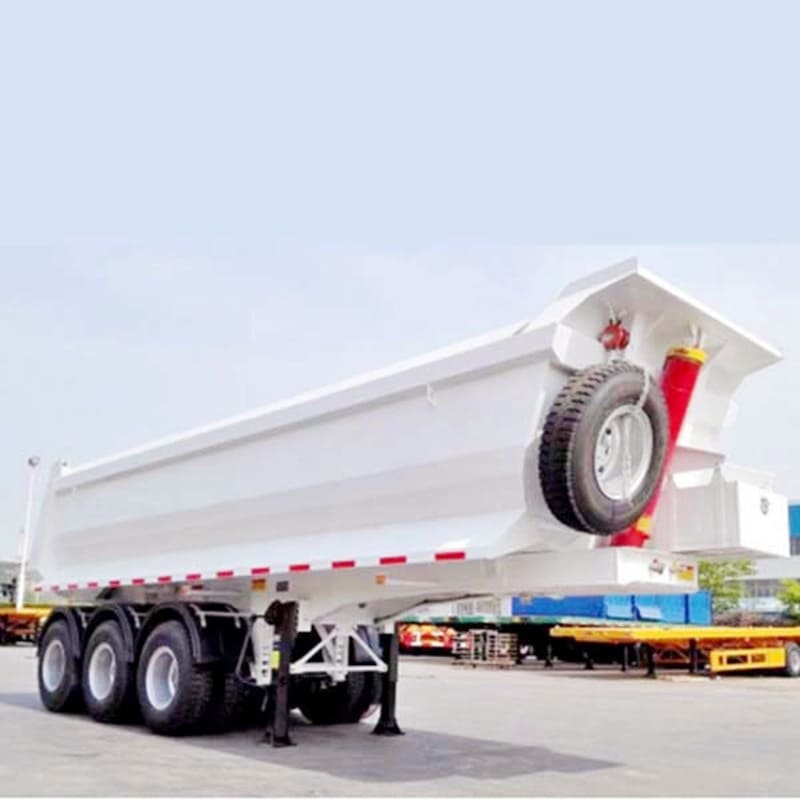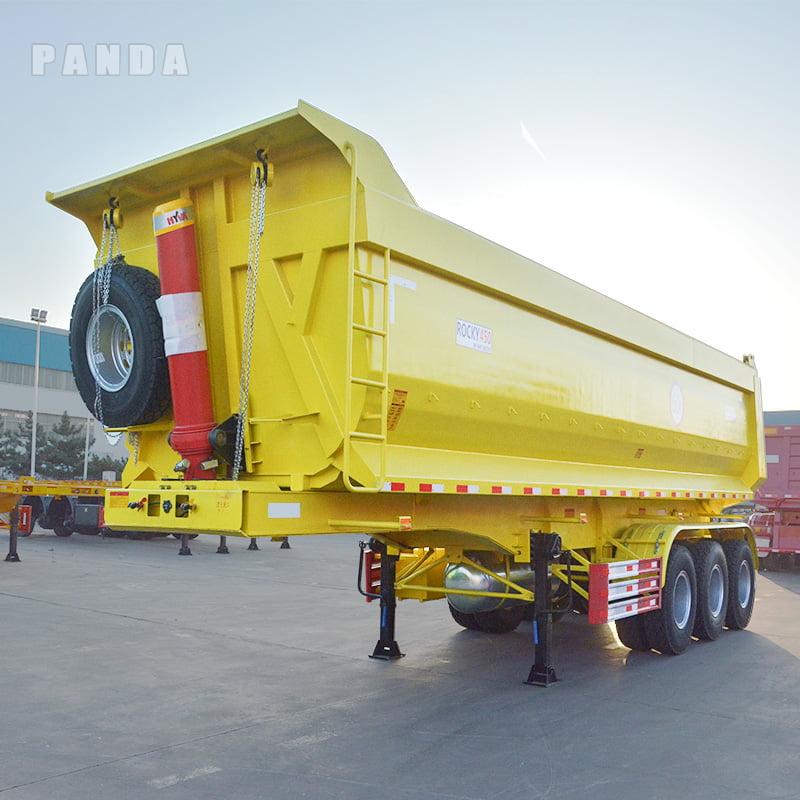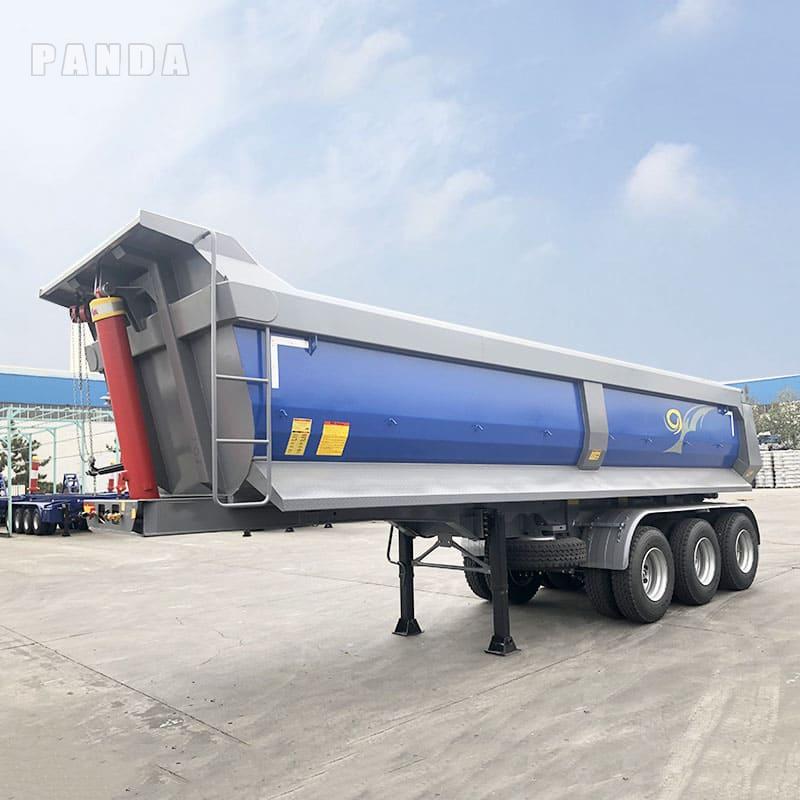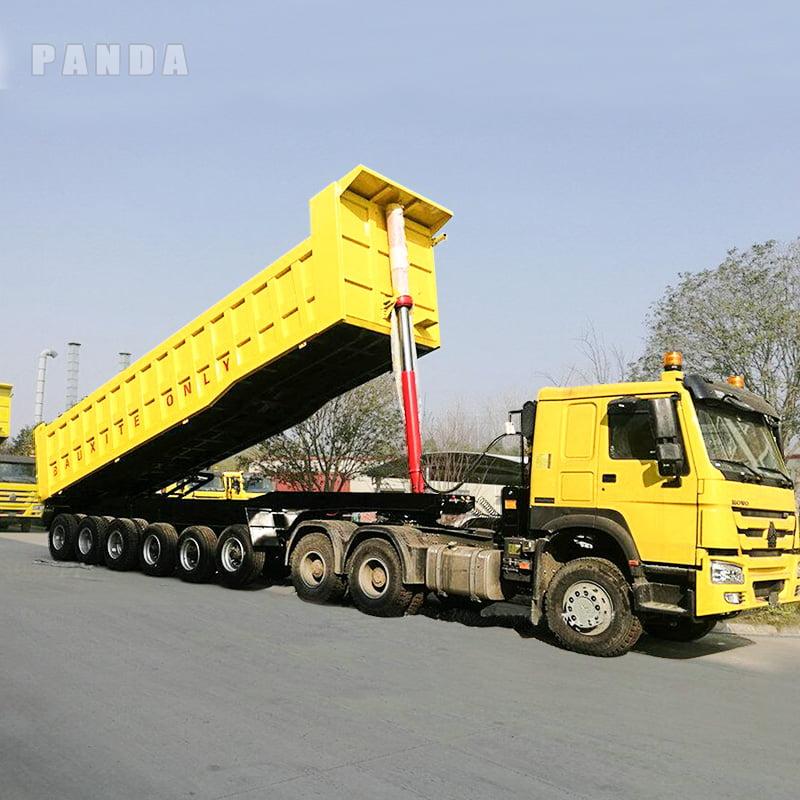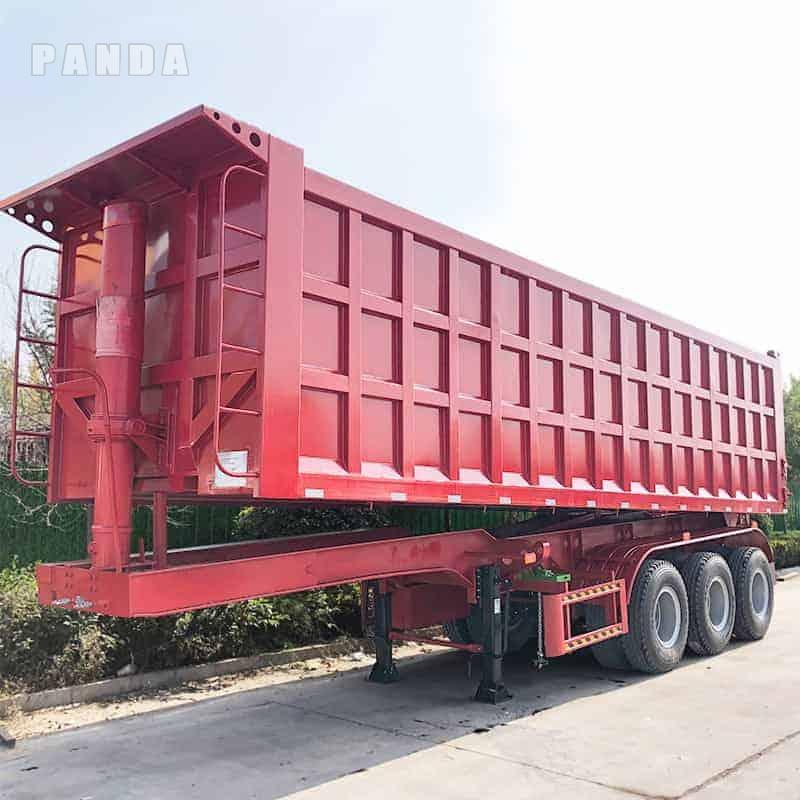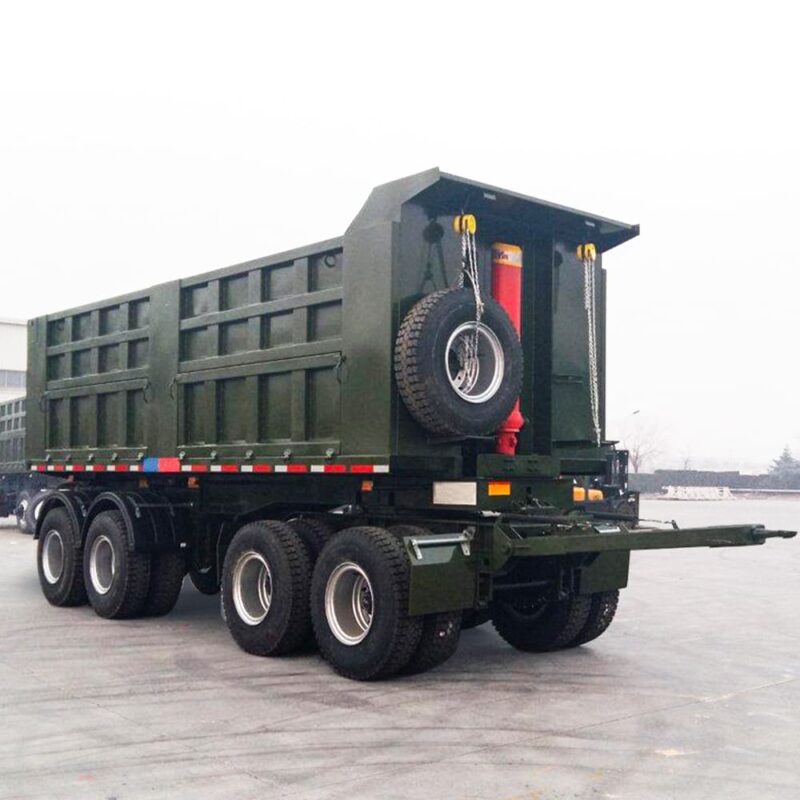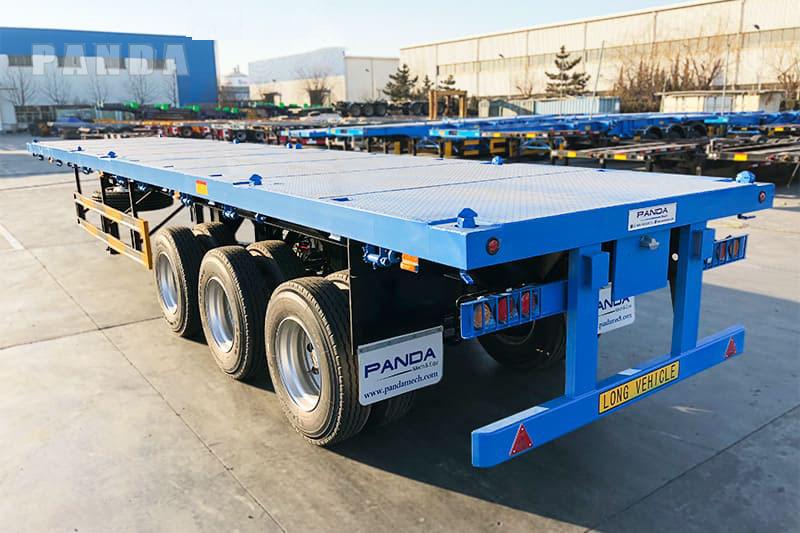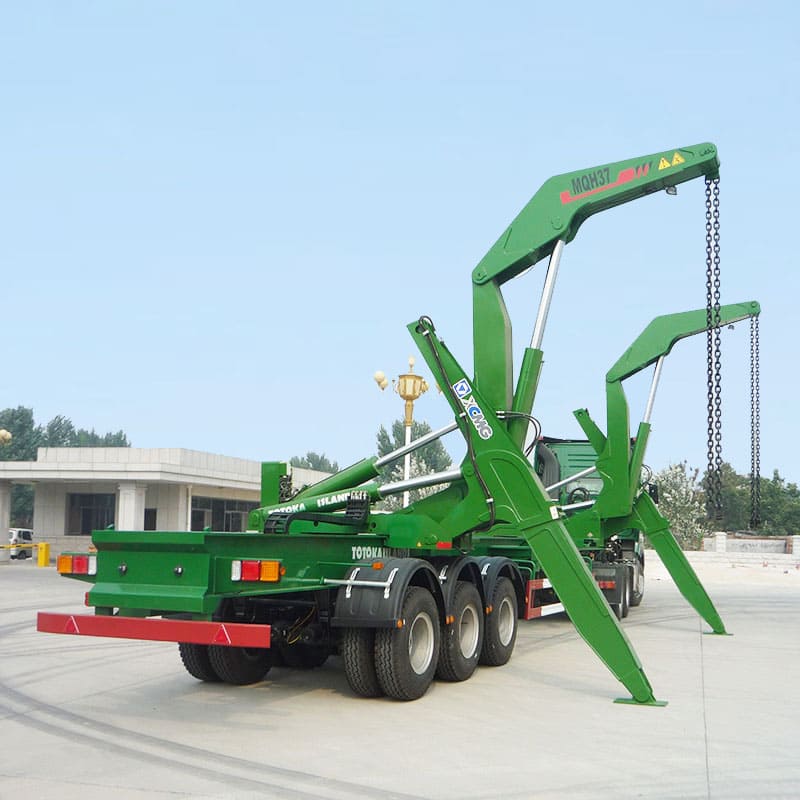
مرحباً، أنا زاك من شركة Panda Mech. الكثير منكم جديد على المقطورات الصهريجية وليس لديه فهم جيد لكيفية عملها، لذا أكتب اليوم مقالاً لمساعدتكم على فهم كيفية عملها بشكل أفضل.
أعمل في مجال صناعة نصف المقطورات منذ أكثر من 20 عاماً، لذا إذا كان لديك صديق لا يفهم أيضاً كيفية عمل مقطورة صهريج الوقود، يمكنك مشاركة المقال معه.
تعمل مقطورة صهريج الوقود عن طريق نقل كميات كبيرة من الوقود بأمان من مكان إلى آخر باستخدام صهريج متخصص ومعدات مصممة لنقل البترول السائب. عندما أقوم بتشغيل ناقلة وقود، أركّز على تحميل الوقود بكفاءة والتأكد من أن كل خطوة، بدءاً من التحميل وحتى التفريغ، تتبع قواعد السلامة الصارمة. أنتبه إلى كيفية تحرك الوقود داخل الصهريج أثناء التحميل، وأعتمد على الميزات المتقدمة مثل أنظمة منع الانقلاب ومراقبة الضغط للحفاظ على سلامة الأمور.
كيف تعمل مقطورة صهريج الوقود المقطورة

عملية التحميل والتفريغ
تتم عملية التحميل والتفريغ لمقطورة ناقلة الوقود باتباع خطوات دقيقة للحفاظ على حركة الوقود بأمان وكفاءة. ألتزم دائماً بروتين يساعدني على تجنب الأخطاء ويحافظ على سلامة الجميع. دعني أشرح لك كيف أتعامل مع كل جزء من العملية.
طرق التحميل
أعلى التحميل
عندما أستخدم التحميل العلوي، أفتح فتحة أعلى الخزان وأوجه خرطوم الوقود إلى الداخل. أقف بجانب الفتحة وأراقب تدفق الوقود إلى الحجرة. تتيح لي هذه الطريقة رؤية مستوى الوقود أثناء ارتفاعه حتى أتمكن من إيقاف عملية التحميل قبل أن يفيض. أرتدي دائماً معدات السلامة وأتحقق من أن الخرطوم آمن قبل البدء.
- أفحص الخرطوم بحثاً عن أي تشققات أو تسريبات.
- أتأكد من أن مكابح الركن ومثبتات العجلات تم تعيينها.
- أبقى متيقظاً ولا أغادر منطقة التحميل أثناء تشغيل العملية.
💡 نصيحة: يمنحني التحميل العلوي رؤية واضحة، ولكن يجب أن أكون أكثر حذراً من الأبخرة والكهرباء الساكنة. (تم التخلي عن هذه الطريقة في التحميل من قبل الكثيرين وتستخدم بشكل عام في مقطورات صهاريج الوقود القديمة).
التحميل السفلي
التحميل من الأسفل هو المفضل لدي لأنه أكثر أمانًا وأسرع. أقوم بتوصيل الخرطوم بصمام في أسفل الخزان. يتدفق الوقود من الأسفل، مما يعني تناثر أقل للوقود وأبخرة أقل. أستخدم العدادات وأجهزة الاستشعار لتتبع عملية التحميل، حتى أعرف بالضبط كمية الوقود التي تدخل في كل حجرة.
- أتحقق مرة أخرى من الاتصال قبل البدء.
- أراقب المقاييس وأوقف العملية إذا رأيت أي شيء غير عادي.
- أحتفظ بجهاز الإغلاق عن بُعد بالقرب مني في حال احتجت إلى إيقاف عملية التحميل بسرعة.
🚦 ملاحظة: يقلل التحميل من الأسفل من خطر الانسكابات ويبعدني عن الأبخرة الخطرة.
طرق التفريغ

التفريغ بالجاذبية
التفريغ بالجاذبية بسيط. أركن المقطورة وأفتح الصمامات وأترك الجاذبية تسحب الوقود إلى صهريج التخزين. تعمل عملية التفريغ هذه بشكل أفضل عندما يكون صهريج التخزين أقل من المقطورة. أراقب التدفق وأغلق الصمامات بمجرد أن يفرغ الخزان.
- أتحقق من جميع التوصيلات قبل بدء تشغيل عملية التفريغ.
- أبقى قريبًا من الصمامات والخراطيم لالتقاط التسريبات مبكرًا.
- أقوم بتصريف الخراطيم بالكامل قبل الانتقال.
التفريغ بمساعدة المضخة
في بعض الأحيان، لا تكون الجاذبية كافية. عندها أستخدم التفريغ بمساعدة المضخة. أقوم بتشغيل المضخة فتدفع الوقود من الخزان إلى نظام التخزين. تساعد عملية التفريغ هذه عندما يكون خزان التخزين أعلى أو بعيدًا. أتحكم في السرعة والضغط، بحيث تبقى العملية آمنة وسلسة.
- أفحص المضخة والخراطيم قبل البدء.
- أراقب مقياس الضغط أثناء عملية التفريغ.
- أقوم بإغلاق المضخة على الفور إذا اكتشفت مشكلة ما.
كيف تتأكد من سلامة مقطورة ناقلة الوقود؟

صمامات الطوارئ
صمامات الطوارئ هي خط دفاعي الأول إذا حدث خطأ ما في مقطورة صهريج الوقود. تتيح لي هذه الصمامات إيقاف تدفق الوقود بسرعة في حالات الطوارئ. يمكنني إغلاقها بسرعة إذا كان هناك تسرب أو انكسار خرطوم أو إذا اكتشفت خطر نشوب حريق. أتحقق دائماً من عمل هذه الصمامات قبل كل رحلة.
إليك كيفية استخدام صمامات الطوارئ للحفاظ على سلامة الأشياء:
- أقوم باختبار كل صمام أثناء الفحص قبل الرحلة.
- أعرف مكان كل صمام بالضبط، لذا يمكنني الوصول إليه بسرعة.
- إذا رأيت خطرًا، أقوم بإغلاق الصمام على الفور لمنع تسرب الوقود.
🚨 نصيحة: يمكن للتصرف السريع باستخدام صمامات الطوارئ أن يوقف تحول مشكلة صغيرة إلى كارثة كبيرة.
أنظمة تخفيف الضغط
تحمي أنظمة تخفيف الضغط ناقلتي من تراكم الضغط الخطير. عندما يسخن الوقود، يتمدد ويخلق ضغطاً داخل الخزان. إذا ارتفع الضغط أكثر من اللازم، فقد ينفجر الخزان. يقوم نظام التنفيس بإخراج الضغط الزائد بأمان.
إليك ما أفعله للتأكد من عمل نظام تخفيف الضغط:
- أفحص صمامات التنفيس بحثًا عن أي انسداد أو تلف.
- أستمع إلى أصوات الهسهسة التي تظهر أن الصمام يعمل.
- لا أقوم أبداً بسد فتحات التهوية أو تغطيتها.
| جزء النظام | ما الذي أتحقق منه | ما أهمية ذلك |
|---|---|---|
| صمام الإغاثة | نظيفة وغير تالفة | يمنع تمزق الخزان |
| أنبوب التنفيس | إزالة العوائق | يسمح بالتنفيس الآمن |
| الأختام والحشيات | لا تشققات أو تسريبات | يحافظ على النظام محكم الإغلاق |
💡 ملاحظة: نظام تخفيف الضغط العامل ضروري للسلامة. فهو يحمي الخزان من التحول إلى قنبلة إذا حدث شيء ما يسخن الوقود.
الوقاية من الحرائق والانفجارات
أتّبع خطوات صارمة للوقاية من الحرائق والانفجارات للحفاظ على سلامتي وسلامة الآخرين حول الوقود. يمكن أن تشتعل أبخرة الوقود بسهولة، لذلك لا أغامر أبداً.
إليك قائمة المراجعة الخاصة بي للوقاية من الحرائق والانفجارات:
- أقوم دائمًا بتأريض الناقلة وربطها قبل التحميل أو التفريغ. هذا يوقف الشرر الساكن.
- أبقي طفايات الحريق قريبة مني وأتحقق من أنها تعمل.
- لا أدخن أبداً أو أستخدم اللهب المكشوف بالقرب من الناقلة.
- أراقب التسريبات أو الانسكابات وأنظفها على الفور.
- أتبع جميع القواعد المعلنة في مستودعات الوقود ومواقع التوصيل.
🔥 تنبيه السلامة: حتى الشرارة الصغيرة يمكن أن تسبب انفجاراً هائلاً عند وجود أبخرة الوقود. أبقى متيقظاً وأتبع كل القواعد.
الصيانة والتفتيش

إن الصيانة والفحص المنتظمين هما العمود الفقري للحفاظ على مقطورة صهريج الوقود آمنة وجاهزة للسير على الطريق. أنا لا أتخطى هذه الخطوات أبداً لأنها تساعدني على اكتشاف المشاكل مبكراً والحفاظ على حماية الجميع.
إليك كيفية تعاملي مع عمليات الصيانة والتفتيش على ناقلتي:
- أقوم بإجراء فحص شامل قبل وبعد كل رحلة. أبحث عن أي انبعاجات أو تسريبات أو مصابيح مكسورة. إذا اكتشفت أي شيء غريب، أقوم بإصلاحه على الفور.
- ألتزم بجدول زمني صارم للتفتيش. تُجرى بعض الفحوصات كل بضعة أشهر، بينما تُجرى فحوصات أخرى سنوياً أو حتى كل 10,000 ميل. يحافظ هذا الروتين على ناقلتي في أفضل حالاتها.
إليك نظرة سريعة على أنواع التفتيش الرئيسية التي أتابعها:
| نوع الفحص | ما الذي أتحقق منه | كم مرة؟ |
|---|---|---|
| مرئي خارجي | الأضرار والتسريبات والأضواء | كل 6-12 شهراً |
| المرئيات الداخلية | التآكل، والتسريبات، وحالة الصمامات | سنوياً |
| اختبار التبطين | شقوق أو ثقوب في بطانة الخزان | سنوياً |
| اختبار التسرب | أي تسربات خطرة | سنوياً أو حسب الحاجة |
| اختبار الضغط | قوة الخزان تحت الضغط | سنوياً أو حسب الحاجة |
| اختبار السُمك | سُمك جدار الخزان | سنوياً أو حسب الحاجة |
أقوم أيضاً بهذه الفحوصات المنتظمة:
- ربع سنوي: أتحقق من الهيكل والأضواء والإطارات والمكابح.
- نصف سنويًا: أفحص شحم المحور وأحكم ربط صواميل العروة.
- سنوياً: أقوم بإصلاح المكابح وفحص المحاذاة وفحص الإطار.
- فحص DOT: أكمل هذا كل عام لتلبية المتطلبات القانونية.
🛠️ نصيحة: أستخدم تطبيقات الفحص الرقمي وأجهزة الاستشعار لتتبع حالة ناقلتي. تساعدني هذه الأدوات على اكتشاف المشاكل بسرعة والاحتفاظ بسجلات مفصلة لكل عملية إصلاح.
أحافظ دائمًا على تحديث سجلات الصيانة الخاصة بي. تُظهر هذه السجلات ما أصلحته، ومتى أصلحته، وما الذي لا يزال يحتاج إلى عناية. إذا كانت المشكلة خطيرة، فإنني أضعها على رأس أولوياتي. وبهذه الطريقة، أعرف أن ناقلتي تفي بجميع معايير السلامة وتجتاز كل عمليات الفحص.
التدريب جزء كبير من روتيني. أبقى متيقظاً من خلال تعلم كيفية اكتشاف المشاكل مبكراً. نتبع أنا وفريقي قواعد صارمة من وزارة النقل وهيئة النقل الفيدرالية لإدارة النقل البحري. تخبرنا هذه القواعد بعدد مرات الفحص وما الذي نبحث عنه. تحتاج بعض الخزانات إلى إجراء فحوصات كل ستة أشهر، بينما تحتاج خزانات أخرى إلى عشر سنوات، حسب نوعها واستخدامها.
🚦 ملاحظة: لا تقتصر الصيانة والفحوصات الجيدة على مجرد اتباع القواعد. إنها تدابير سلامة حقيقية تحميني وتحمي حمولتي وكل من على الطريق.
مقطورات صهريج الوقود للبيع
راجع: https://en.wikipedia.org/wiki/Tank_truck
الأسئلة الشائعة
هل يمكن أن تحتوي مقطورة صهريج الوقود على أكثر من مقصورة واحدة؟
نعم، يمكن أن تحتوي مقطورة صهريج الوقود على مقصورات متعددة، حتى 10 مقصورات.

